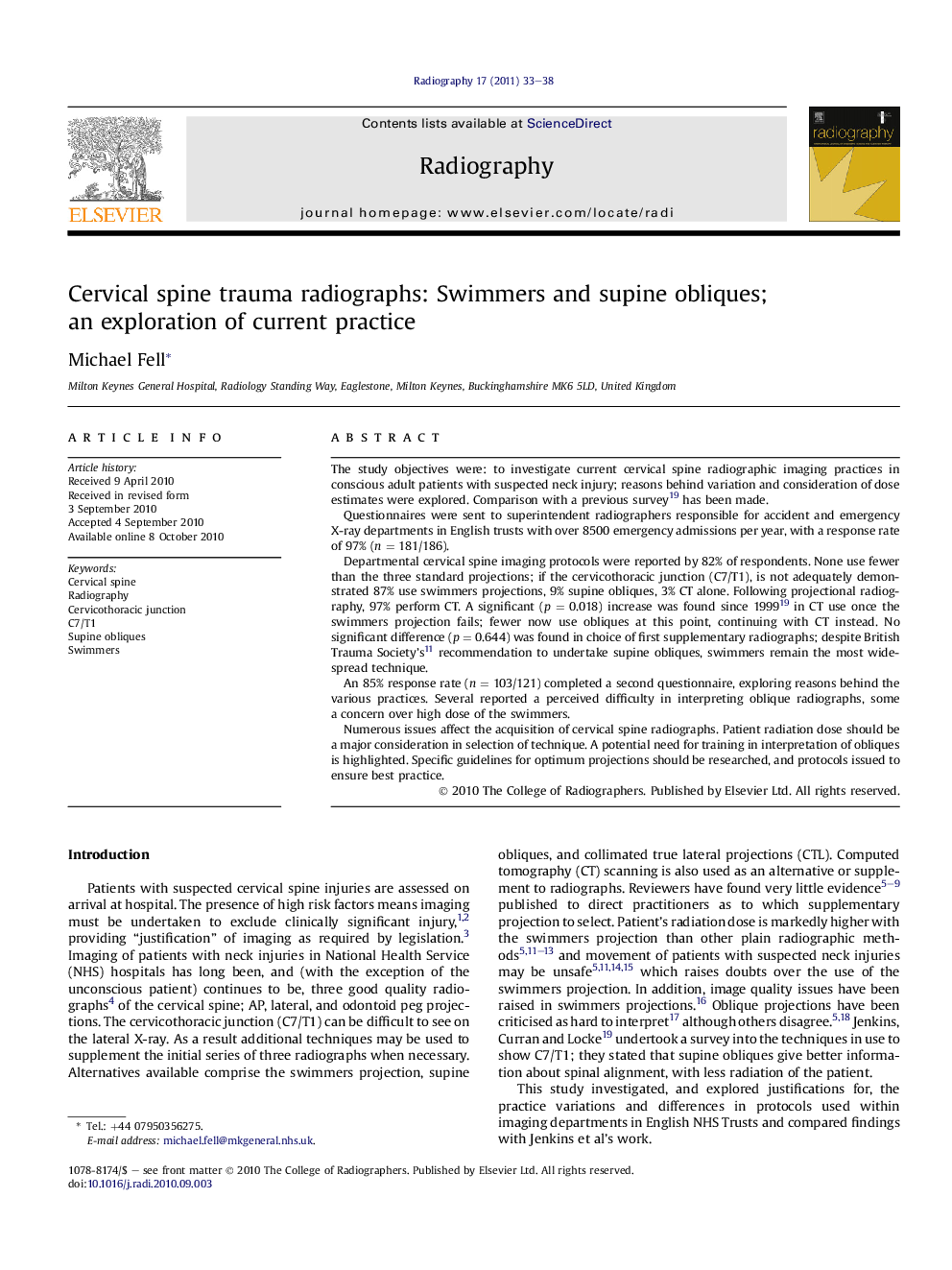| Article ID | Journal | Published Year | Pages | File Type |
|---|---|---|---|---|
| 2735924 | Radiography | 2011 | 6 Pages |
The study objectives were: to investigate current cervical spine radiographic imaging practices in conscious adult patients with suspected neck injury; reasons behind variation and consideration of dose estimates were explored. Comparison with a previous survey19 has been made.Questionnaires were sent to superintendent radiographers responsible for accident and emergency X-ray departments in English trusts with over 8500 emergency admissions per year, with a response rate of 97% (n = 181/186).Departmental cervical spine imaging protocols were reported by 82% of respondents. None use fewer than the three standard projections; if the cervicothoracic junction (C7/T1), is not adequately demonstrated 87% use swimmers projections, 9% supine obliques, 3% CT alone. Following projectional radiography, 97% perform CT. A significant (p = 0.018) increase was found since 1999 19 in CT use once the swimmers projection fails; fewer now use obliques at this point, continuing with CT instead. No significant difference (p = 0.644) was found in choice of first supplementary radiographs; despite British Trauma Society’s 11 recommendation to undertake supine obliques, swimmers remain the most widespread technique.An 85% response rate (n = 103/121) completed a second questionnaire, exploring reasons behind the various practices. Several reported a perceived difficulty in interpreting oblique radiographs, some a concern over high dose of the swimmers.Numerous issues affect the acquisition of cervical spine radiographs. Patient radiation dose should be a major consideration in selection of technique. A potential need for training in interpretation of obliques is highlighted. Specific guidelines for optimum projections should be researched, and protocols issued to ensure best practice.
